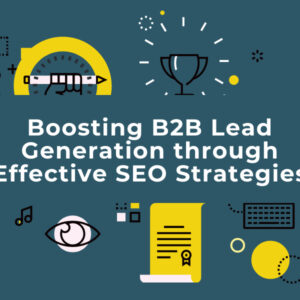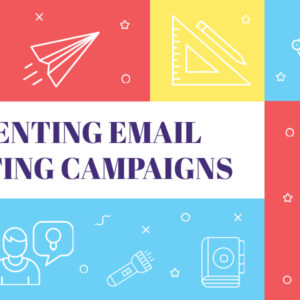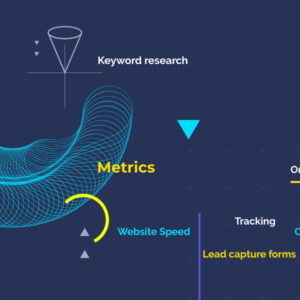When it comes to business success, the flywheel is a useful analogy. In fact, the flywheel is one of the most widely used business analogies. It explains how some businesses succeed and others fail, even in the same market. The flywheel captures this dynamic by comparing a company’s growth to the momentum of an old hand spinning a giant wheel. When you spin the wheel fast enough and keep it going, its momentum keeps it spinning indefinitely. If you slow down or stop, however, it comes to a grinding halt. A successful business creates positive feedback loops that accelerate growth and create continuous forward motion. Companies that fail do so because they don’t establish those feedback loops or fail to accelerate growth at an ever-increasing rate…
What is a Flywheel?
A flywheel is a rotating wheel that stores energy as it spins. When energy is released, it accelerates the wheel to spin even faster. Flywheels are used in machines to keep them running smoothly, even when the power source is interrupted. The flywheel is a useful analogy for business because it illustrates that growth is the result of positive feedback loops. For example, the more energy is put into a flywheel, the faster it spins. If a flywheel is spinning at the correct speed, it looks like it’s not moving at all. One of the most important lessons from the flywheel is that successful companies don’t focus on short-term gains; they focus on continuous growth.
How to Build a Flywheel
The first step in building a flywheel is to establish a strong foundation. In business, that means developing a product that is deeply useful to customers. This requires a deep understanding of buyer behavior and market trends. Once you have that product, you need to find a way to distribute it as efficiently as possible. That means making it accessible to as many customers as possible through the right channels. And finally, you need to ensure that your product and business model are designed for scale. This means building a business that allows for long-term and sustainable growth. Flywheels aren’t something you can build in a single quarter or even a single year. They take time to build and require commitment, consistency, and flexibility. You can’t force a flywheel; you have to let it build momentum on its own.
The best way to understand the flywheel is to see how it works. You can use the following questions to build a flywheel:
- What drives your business? What are your core products or services?
- What are your company values? What is the culture of your organization?
- What are your customer demographics?
- What are your acquisition channels?
- What are your retention strategies?
- What are your revenue streams?
You can take one the most popular example as reference to start your own flywheel.
Understanding the Flywheel: Where Success Comes From Failure
Most companies fail to understand that they need to create a flywheel. They don’t build a strong, consistent revenue stream. Instead, they are short-sighted, trying to grow revenue as fast as possible in order to sell the company or get a large exit. This is why most start-ups fail to succeed. In order to build a flywheel, you need to understand that failure is a necessary part of success. The more you fail, the faster your flywheel spins. The more consistent you are, the more quickly you achieve momentum and continuous growth. Be honest about your failures and learn from them. Each time you fail, your flywheel gains momentum. The faster the flywheel spins, the more positive feedback you are able to create. In order to succeed, you need to be consistent. Your product or service needs to be dependable and reliable, and your acquisition strategy needs to be continuous.
Continuous Improvement Is Key
A successful company never stops improving its product or service. It is constantly innovating through user testing and new product iterations. This can be costly, but it is an essential part of building a flywheel. Customers expect companies to improve on their offerings and provide better and better products or services. In order to meet these expectations, you need a strong and disciplined R&D team. You need to be able to understand the needs of your customers and provide solutions to their problems. You need to be able to pivot in response to market changes. You need to be able to acquire customers in a cost-effective and scalable way. And you need to keep those customers coming back for more.
A Company’s Culture Drives its Flywheel
When you create a flywheel, you create a culture that drives that flywheel. You need to hire employees who fit with your company culture and who hold themselves to the same values as your company. You need to be honest about your goals, both internally and externally. You need to tell your employees what you expect of them and hold them accountable to those goals and expectations. You need to be straightforward with your customers and keep them informed about the product or service they are using. You need a culture that drives the flywheel and keeps it spinning.
Frequent Product Iteration to Drive User Acquisition
The most important part of a flywheel is product iteration. Continuous product iteration is the single most important thing you can do to accelerate growth. When you’re building a flywheel, you’re making a long-term commitment to your customers. You’re promising that you’re in it for the long haul, and will be there to serve them for years to come. That’s why you need to constantly evaluate your customers’ needs and expectations. You need to stay close to them and be willing to make changes when necessary. Product iteration is more than just adding new features or upgrading your product. It’s about making sure that your product delivers real value to your customers and solves real problems.
Types of Flywheels
There are six types of flywheels that businesses use to accelerate growth and achieve success. These are the product, technology, distribution channels, marketing, customer experience, and the team. You want to focus on accelerating each of these categories to create a strong and consistent flywheel. In order to build a flywheel, you need to understand which part of your business to focus on next. Each of these six categories creates a positive feedback loop that accelerates growth.
Product – The product you offer is at the center of your business. It is the reason people come back to your business. Without a strong product, you can’t build a consistent flywheel.
Technology – Technology powers your business. It helps you scale and provide products and services to thousands or millions of people.
Distribution Channels – Distribution channels help you get your product to your customers. It can be physical or digital, like an app or e-commerce website.
Marketing – Marketing is the way you get people to come to your product or service. It is how you get customers.
Customer Experience – The customer experience is how people use your product or service. It is how they interact with your company.
Team – The team is the people who make up your company. The stronger and more consistent your team, the faster your flywheel spins.
Why Are There So Many Failures in Business?
There are many reasons why businesses fail, but most of them stem from the fact that they don’t create a flywheel. They don’t establish a consistent revenue stream and they don’t have a strong culture. They don’t have a strong product or a strong team. When you are honest about your goals, you can understand where your business is falling short. You can see where you need to improve and create a stronger flywheel. When you do this, you are more likely to succeed. Some businesses fail because the market changes. They can’t adapt to new trends and customer needs and expectations. Other businesses fail because they try to grow too quickly. They try to grow before they have a strong product or team. You need to focus on building a flywheel before trying to grow too quickly.
3 Ways to Accelerate Your Flywheel
There are a few ways to accelerate your flywheel and make it spin faster. The key is to focus on one element at a time. You can use these questions to accelerate your flywheel:
- What does your product do? How does your product solve problems for customers?
- How does your company communicate? How does your organization share information and goals?
- What are your existing revenue sources? What revenue streams do you have already?
By answering these questions, you can understand which part of your business needs improvement. Once you understand where you need to focus your attention, you can start building a stronger flywheel and achieving success.
Conclusion
The flywheel is a useful analogy for understanding how some businesses succeed and others fail. A successful business creates positive feedback loops that accelerate growth and create continuous forward motion. Companies that fail do so because they don’t establish those feedback loops or fail to accelerate growth at an ever-increasing rate. That’s why it’s important to establish a strong foundation, find a way to distribute your product efficiently, and design your product and business model for scale. Companies can use their flywheels to either accelerate growth or grind to a halt.
Read more How to Use Amazon’s Flywheel Effect to Grow Your Business








This Post Has One Comment